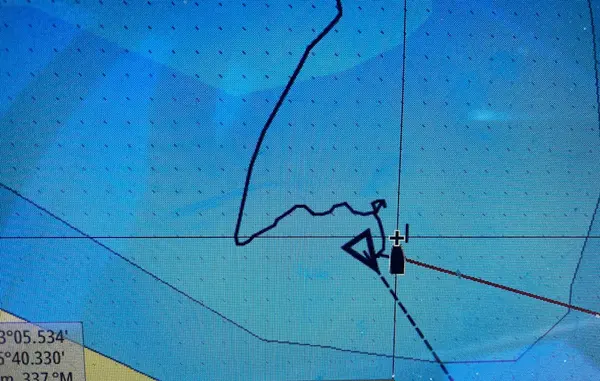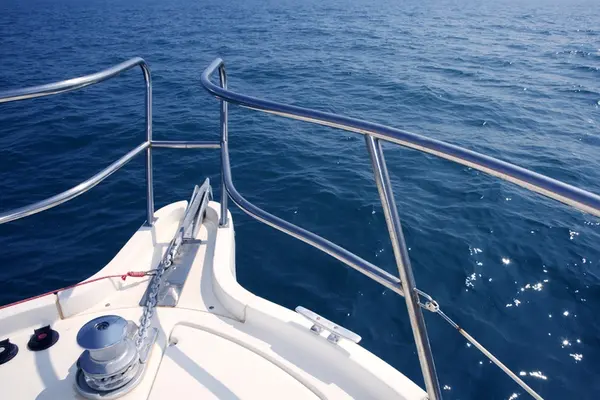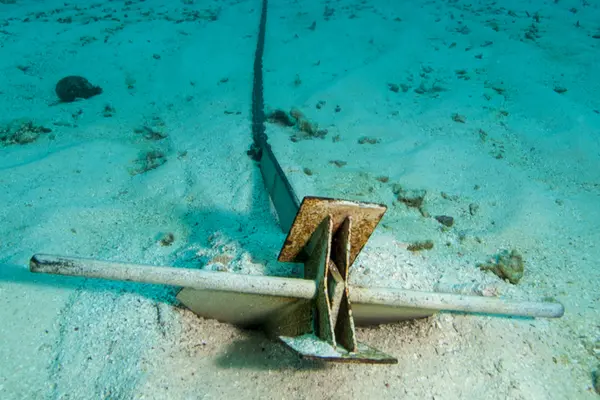Anchoring is a pure joy for those who love deserted bays. At night it is unrestricted plus it saves on marina fees. But for some, it is such a nightmare that they avoid anchoring at night even after years of yachting experience under their belt. That's why today we are bringing you a simple and proven method to make sure the anchor is holding securely!

The method Tomáš is kindly sharing with us has never let him down even under more demanding conditions. We are not claiming it to be the one and only way, but it works for us and it will definitely be of help to novice sailors. So let's take a look at it!
The biggest school for me was two months of mooring in Greece. Anyone who knows Greece, knows that they won't just come across a mooring point, so 99% of the nights on a boat in Greece are at anchor, even in the harbour. Mooring in the harbour is all the more complicated because there is a lot of iron there, old and new, and even thrown crossways by the captain arriving after you. In Greece, you need an anchor, and I personally consider the best way to check it is with a stress test. Tomáš
There are, of course, various methods. Some people put their hand or foot on the chain to feel for shocks that the anchor sends as it skips along the floor. Others dive down to look at the anchor, which is not always possible. That is why we are bringing you a simple stress test that can be done even with a small crew. So how to do it?
- Drop the amount of chain you need to anchor at the selected location.
Then use the engine to help. From neutral steadily apply thrust to 1100 rpm. This alone alone is not enough, so you’ll need something more to help you.
- When the chain tightens, switch on the chartplotter (zoom in as much as possible) with the cross on your boat where you are at rest. The cross can either be at the bow or stern. If the boat is not moving, increase revs to 1500 rpm, which mimics about 12 knots of wind, i.e. no significant wind. Is the boat moving? If not and you are in a place that is well-protected where you know the wind won’t be powerful, this reassurance may be enough.

- If the weather is worse or you want to make absolutely sure, increase the thrust to 2000 rpm. This simulates a stronger wind. Continue to monitor whether or not the boat is moving on the chartplotter. If the anchor is holding fast, you will see only minimal movement and tension on the chain.
Opinions on this will certainly differ, but this method works well for us, especially when we only have ourselves to rely on and can’t operate the engine and be at the chain at the same time.
TIP: Is there a risk of the weather worsening? Prepare yourself by reading our article on anchoring in a storm.

More tips to improve safety when at anchor
- If you are not sure, try to anchor again. If the situation does not improve, choose another, safer mooring.
- Don't rush.
- Improve safety by turning on the anchor alarm.
- If you expect more stormy weather, set up anchor watches.
- A chain counter is a big advantage as it allows you to see from the cockpit how much chain is in the water. This means you can control everything directly at the wheel.
- If you can, select a boat with a better anchor. You probably won't get this option so you’ll definitely have to monitor the anchor carefully. The problem with most charter boats is the Delta anchor, which acts like a plow and often tends to dig up the sea floor.
Do you have any of your own tips on how to tell if the anchor is holding? If you do, we’d love you to share them with us, for example, on our Facebook page. And if you're still worried about being at anchor, at least give it a try. You’ll be rewarded with beautiful evenings and mornings in deserted bays!

